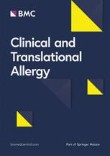La pérdida de peso involuntaria y que no se explica por un cambio de hábitos es una preocupación que puede tener causas diferentes. Entre ellas están las alteraciones en el funcionamiento de la glándula tiroides.
La pérdida de peso involuntaria puede deberse a causas diversas:
- Efectos secundarios de algunos medicamentos (algunos de los que se emplean para tratar condiciones de la tiroides)
- Alteraciones de la salud mental o el estado de ánimo
- Alcoholismo
- Anorexia nerviosa
- Dificultad para tragar (un síntoma de diferentes enfermedades)
- Alteraciones de la salud bucodental
- Alteraciones cognitivas
- Problemas intestinales
- Cáncer
- Hipertiroidismo, hipotiroidismo, hiperparatiroidismo, hipoadrenalismo
Pérdida de peso y problemas de tiroides
Los científicos han comprobado hace tiempo que la relación entre las enfermedades de la tiroides, el peso corporal y el metabolismo es estrecha, pero no necesariamente sencilla.
Aunque las hormonas de la glándula tiroides son importantísimas para el peso corporal, no son ni mucho menos el único elemento que determina una posible pérdida de peso involuntaria. Hay otras hormonas, proteínas y procesos del organismo que pueden explicar por qué una persona pierde peso.
Las hormonas tiroideas regulan el metabolismo. Si la medida del metabolismo se obtiene en reposo, el resultado se denomina tasa metabólica basal (TMB, o BMR por sus siglas en inglés).
Los expertos en endocrinología han investigado la relación entre TMB y han llegado a las siguientes conclusiones:
- La TMB en valores bajos está asociada con niveles bajos de hormonas tiroideas en el organismo
- La TMB en valores altos está asociada con niveles elevados de hormonas tiroideas (hipertiroidismo), una de las posibles causas de pérdida de peso involuntaria
La TMB ya casi no se emplea debido a la complejidad de la prueba y a que hay más factores que causan pérdida de peso, pero su relación con la tiroides está establecida.
En cuanto a la relación entre TMB y condiciones de la tiroides, se ha documentado que los valores elevados en esta prueba en personas con hipertiroidismo llevan asociados en muchas ocasiones pérdida de peso involuntaria.
Además, la pérdida de peso es mayor si el hipertiroidismo es severo. Por ejemplo, si la tiroides está extremadamente hiperactiva -produciendo hormonas en cantidades sustancialmente excesivas- la TMB del paciente se incrementa. Eso hace que el cuerpo necesite más calorías para mantener su actividad normal. Es una de las causas de pérdida de peso relacionada con la actividad de la tiroides.
Puesto que el hipertiroidismo es un estado alterado del organismo, puede predecirse que la pérdida de peso se corregirá cuando la tiroides recupere la normalidad.
De todas formas, los especialistas suelen recordar que los factores que controlan nuestro apetito, metabolismo y actividad son extremadamente complejos. Las hormonas de la glándula tiroides son únicamente uno de esos factores.
Si sospechas que puedes padecer alguna enfermedad de la glándula tiroides debes hablar con tu médico. En el siguiente test te damos algunas pistas.
FUENTES
American Thyroid Association. Thyroid and Weight FAQs.
Torlinska B et al 2019 Patients treated for hyperthyroidism are at increased risk of becoming obese: findings from a large prospective secondary care cohort. Thyroid 29:1380–1389. PMID: 31375059.
Gang L, et al. Abstract 11438: Thyroid Hormones and Changes in Body Weight and Metabolic Parameters in Response to Weight-Loss Diets: The POUNDS LOST Trial. Circulation. 2016;134:A11438
La entrada Perdida de peso involuntaria: causas se publicó primero en Cuida tu tiroides.




